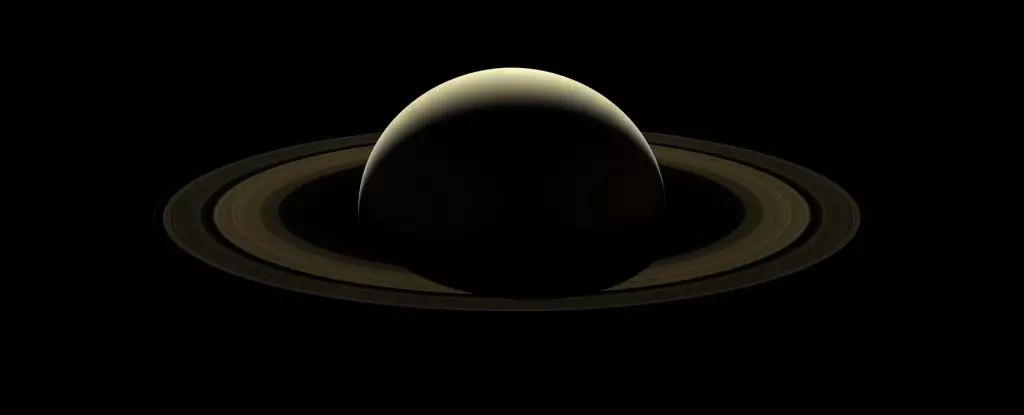The recent findings by scientists have unveiled a startling energy imbalance across the gas giant planet Saturn. This discovery has brought new insights into the world of planetary science, challenging existing theories and models. Physicist Liming Li from the University of Houston describes it as a groundbreaking moment in understanding the formation and evolution of planets and atmospheric science.
The source of energy for planets like Saturn comes from the Sun, which bathes them in light and warmth. However, apart from this external source, gas giant planets also possess internal energy that affects their climate. The study led by atmospheric scientist Xinyue Wang delved into Cassini data to analyze Saturn’s energy absorption and emission. What they found was a significant variation in energy balance, with fluctuations corresponding to the planet’s seasonal changes.
One of the key factors contributing to Saturn’s energy imbalance is its elliptical orbit around the Sun. Unlike Earth, whose orbit is relatively circular, Saturn’s orbit is characterized by eccentricity. This eccentricity causes the planet to experience a fluctuation of nearly 20 percent in its distance from the Sun. As a result, Saturn receives varying levels of solar radiation throughout its orbit, leading to seasonal energy imbalances.
The discovery of Saturn’s energy imbalance challenges the conventional wisdom in planetary science. Previous models and theories assumed a balanced global energy budget for gas giants like Saturn. However, the new findings suggest a reevaluation of these existing models to incorporate the observed seasonal variations. This could potentially shed light on the mechanisms behind the formation of convective storms on Saturn and other gas giants like Jupiter.
The implications of Saturn’s energy imbalance extend beyond the realm of gas giants. Insights gained from studying Saturn could help improve our understanding of Earth’s climate dynamics. Furthermore, similar energy imbalances may exist on other gas-shrouded planets in the Solar System, such as Neptune and Uranus. The high orbital eccentricity and tilt of Uranus, in particular, suggest that it may exhibit the most pronounced energy imbalance among the gas giants.
The findings on Saturn’s energy imbalance have opened up new avenues for future research and exploration. Scientists are now considering the possibility of similar energy imbalances on other gas giants, which could have significant implications for our understanding of planetary weather and climate. By formulating testable hypotheses and leveraging future missions, researchers aim to unravel the mysteries of these distant worlds and expand our knowledge of the Solar System.
The discovery of Saturn’s energy imbalance represents a paradigm shift in planetary science. By challenging existing theories and models, scientists are paving the way for a deeper understanding of the complex dynamics at play on gas giant planets. The mysteries of Saturn and its fellow gas giants continue to captivate our imagination and inspire further exploration into the depths of the Solar System.

Leave a Reply